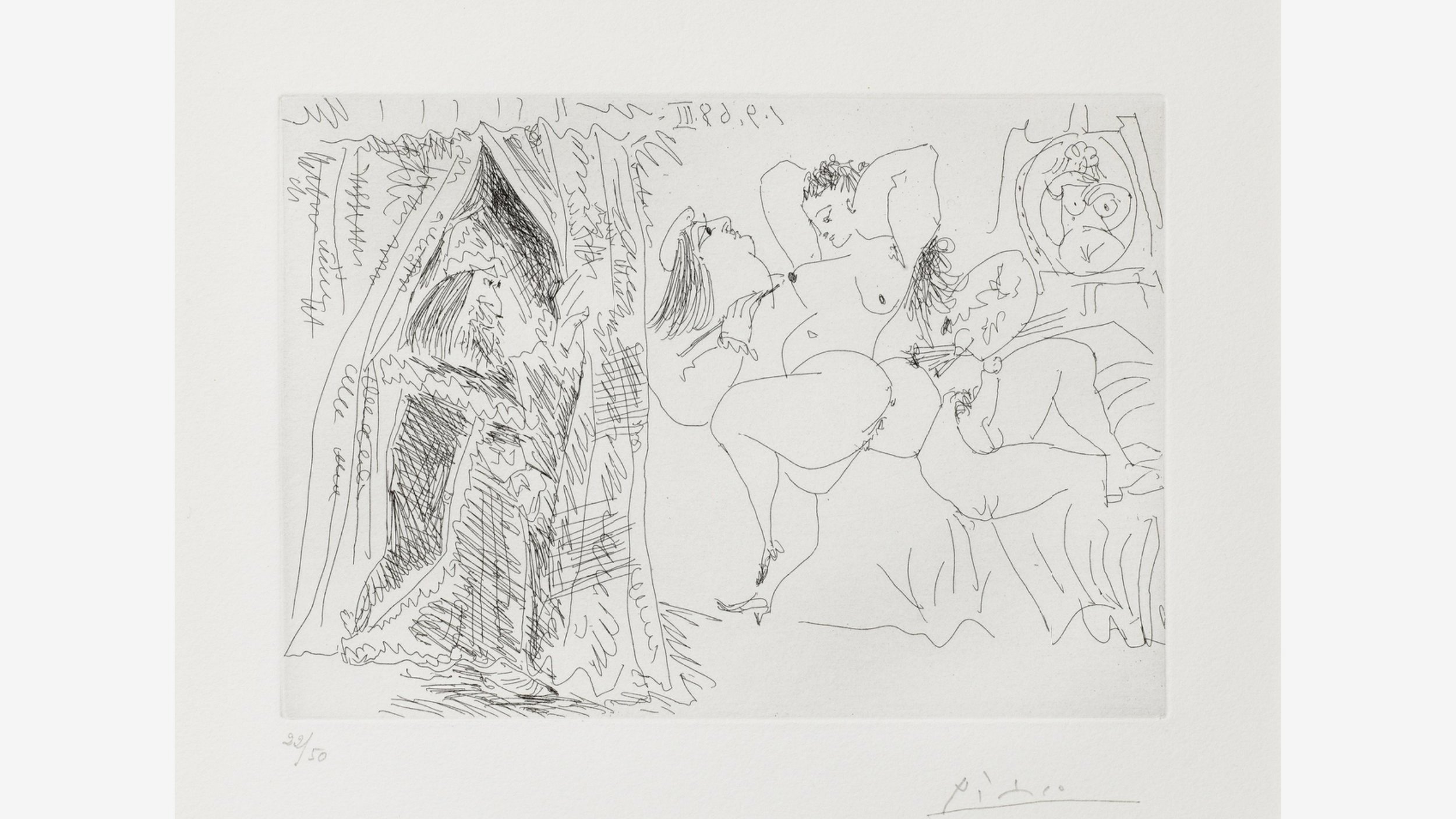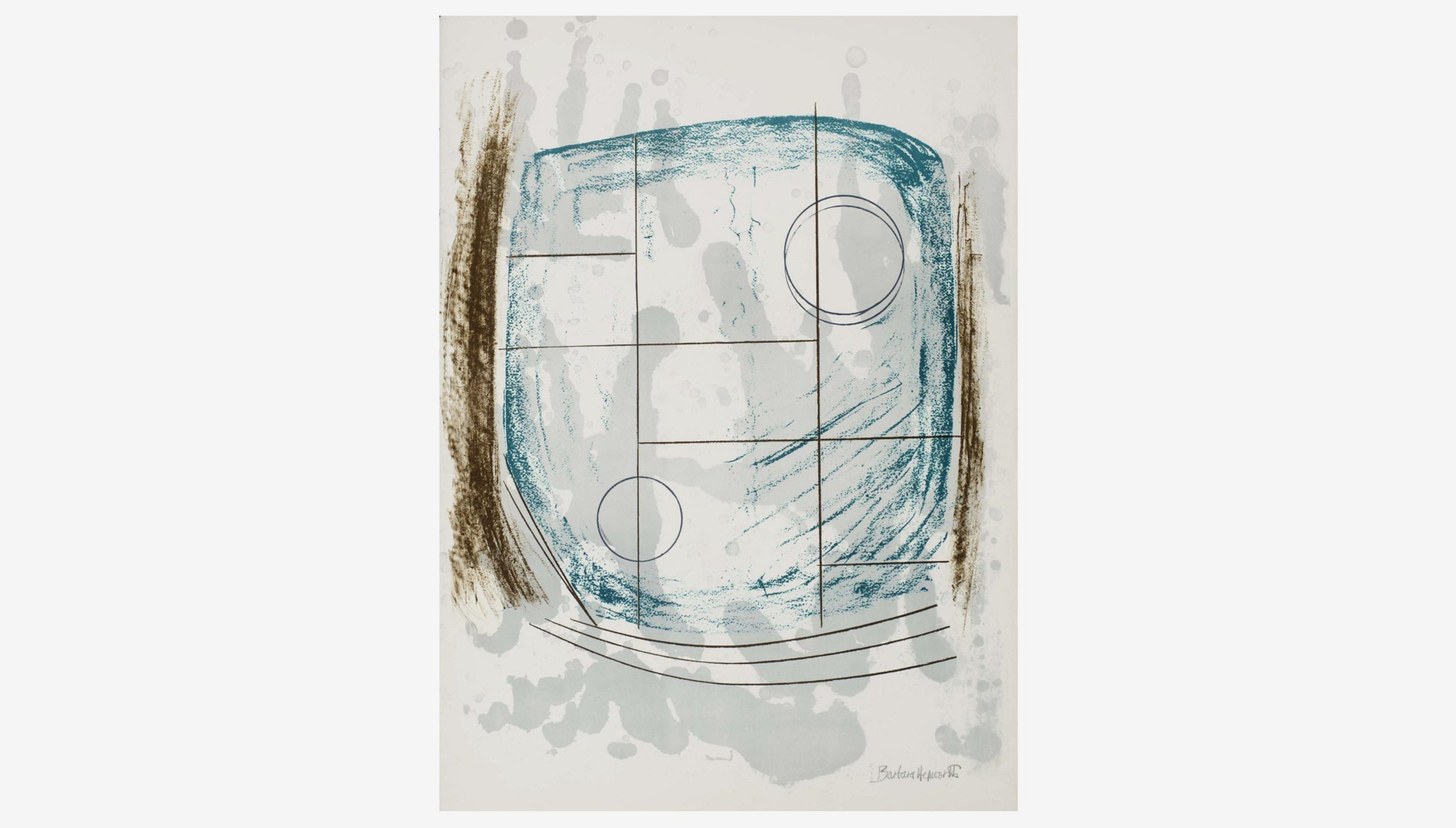
Peter Doig – Road to Zermatt
A collection that marks the artist’s first return to snowscapes since the 1990s, ‘Zermatt’ is also Doig’s first thematic group of works. The series was conceived in 2018, when Swiss architect and artist Heinz Julen offered Doig his chalet in the idyllic resort town as an artistic prompt to paint his surroundings.

Peter Doig – Couloir 1
A collection that marks the artist’s first return to snowscapes since the 1990s, ‘Zermatt’ is also Doig’s first thematic group of works. The series was conceived in 2018, when Swiss architect and artist Heinz Julen offered Doig his chalet in the idyllic resort town as an artistic prompt to paint his surroundings.

Henri Matisse – Circé, from Ulysses by James Joyce
Henri Matisse Circé, from Ulysses, 1935 is one of six illustrations that Matisse completed for an illustrated edition of James Joyce’s novel Ulysses based on the Greek epic poem The Odyssey by Homer. This etching is titled after Circé, a Greek goddess (sometimes described as a witch or sorceress) whom Odysseus and his men encountered during their long journey home to Ithaca.

Pablo Picasso – Raphaël et la Fornarina. VIII, from Series 347
Perhaps the most influential artist of the 20th century, Pablo Picasso may be best known for pioneering Cubism and fracturing the two-dimensional picture plane in order to convey three-dimensional space. Inspired by African and Iberian art, he also contributed to the rise of Surrealism and Expressionism.

After Piet Mondrian – Victory Boogie Woogie
Piet Mondrian is famous for his abstract geometric paintings and his contributions to the De Stijl movement in the early 20th century. The painter developed a pared-down aesthetic schema that featured squares and rectangles of only black, white, and primary colors, all separated by strictly straight lines.

Jasper Johns – 0 through 9
0 through 9, printed in brown, is a forceful presence on the sheet. The drawing functions to enclose and compress. Hatching strokes, familiar in Johns' work since the four-panel Untitled painting of 1972, modulate interstices between marks that signify numerals. The place on the left border broken by the point of the 4 makes us momentarily more aware of that figure than the others. Areas of the handmade paper appear to flicker between strokes of ink, seemingly in response to - or drawing our attention to - colored flecks of pulp in the warm, gray sheet: white, blue-gray, and a few faint brownish-pink spots, similar to the color of the inked numerals.

After Wassily Kandinsky
Wassily Kandinsky pioneered abstract painting in the early 20th century. He believed that geometric forms, lines, and colors could express the inner life of the artist—a theory quite evident in his own explosive paintings, which were often inspired by music.

Damien Hirst – The Empresses, H10-5 Taytu Betul
The Empresses by Damien Hirst, a series of five glorious prints depicting carefully composed images of butterflies. The striking Empresses prints are constructed of beautiful images of red butterfly wings, which are intricately arranged with a filigree of red glitter to produce visually intoxicating kaleidoscope-like effects.

Damien Hirst – The Empresses, H10-4 Suiko
The Empresses by Damien Hirst, a series of five glorious prints depicting carefully composed images of butterflies. The striking Empresses prints are constructed of beautiful images of red butterfly wings, which are intricately arranged with a filigree of red glitter to produce visually intoxicating kaleidoscope-like effects.

Damien Hirst – The Empresses, H10-3 Theodora
The Empresses by Damien Hirst, a series of five glorious prints depicting carefully composed images of butterflies. The striking Empresses prints are constructed of beautiful images of red butterfly wings, which are intricately arranged with a filigree of red glitter to produce visually intoxicating kaleidoscope-like effects.

Damien Hirst – The Empresses, H10-2 Nur Jahan
The Empresses by Damien Hirst, a series of five glorious prints depicting carefully composed images of butterflies. The striking Empresses prints are constructed of beautiful images of red butterfly wings, which are intricately arranged with a filigree of red glitter to produce visually intoxicating kaleidoscope-like effects.

Damien Hirst – The Empresses, H10-1 Wu Zetian
The Empresses by Damien Hirst, a series of five glorious prints depicting carefully composed images of butterflies. The striking Empresses prints are constructed of beautiful images of red butterfly wings, which are intricately arranged with a filigree of red glitter to produce visually intoxicating kaleidoscope-like effects.

Henry Moore – Three Seated Figures with Children
Henry Moore made large-scale modernist sculptures of the human form. Throughout his career, the artist carved the Madonna and Child, nuclear families, and single figures in repose. His style embraced hollows, crevices, and undulating, biomorphic shapes that all complicated the boundary between figuration and abstraction.

Barbara Hepworth – Rangatira II, Opposing Forms
A lesser known side of Barbara Hepworth’s artistic oeuvre are her works on paper. Showcasing her incredible draftmanship, the artist said of her ‘Opposing Form’s’ series, that the drawings were ‘sculptures born in the disguise of two dimensions’.

Barbara Hepworth – Cool Moon
'Cool Moon' was the first composition in the second group of lithographs that Hepworth drew. In the introduction to the prints she explained how she wanted to work in the prints on ideas on which she was then working in sculpture.

Dan Hillier – Undreamt
His work is born out of a passion for line work and collage, a love of archaic imagery and an urge to produce pictures that provoke humour, wonder and a certain subconscious recognition in the viewer.

Ellsworth Kelly – Marigot
His spare, often irregularly shaped canvases offered a crucial departure from the gestural abstraction that dominated American painting in the middle of the 20th century.

Marc Chagall – Corbeille de Fruits et Ananas
Displaying a large colorful bouquet on the left and a plentiful basket of ripe fruit on the right, Marc Chagall Corbeille de fruits et ananas (Basket of Fruit and Pineapples), 1964 conveys a sense of warmth and plentitude that traditionally characterizes the months of spring and summer.

Brian Clarke – Vesper
Merging form and abstraction through interactions with light and colour, the poppies are in a state of constant transformation, engendered by the gentle chromatic effusions of watercolour. Through Clarke’s skilful hand, this medium captures the flowers’ feeling of diaphanous membrane. The liquid essence of watercolour is reminiscent of the transilluminating qualities of stained glass, a medium that Clarke has consistently elevated throughout his practice.

Damien Hirst – The Currency
The Currency marries one of Hirst’s most generative bodies of work to his lifelong fascination for technology and materiality. Ever disrupting art world conventions, the artist's use of NFTs is an important development in his ongoing interest in notions of ownership and collecting.

